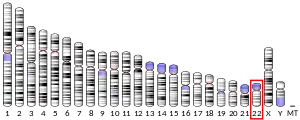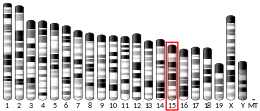ARHGAP8
Rho GTPase-activating protein 8 is a protein that in humans is encoded by the ARHGAP8 gene.[5][6]
| ARHGAP8 | |||||||||||||||||||||||||||||||||||||||||||||||||||
|---|---|---|---|---|---|---|---|---|---|---|---|---|---|---|---|---|---|---|---|---|---|---|---|---|---|---|---|---|---|---|---|---|---|---|---|---|---|---|---|---|---|---|---|---|---|---|---|---|---|---|---|
| Identifiers | |||||||||||||||||||||||||||||||||||||||||||||||||||
| Aliases | ARHGAP8, BPGAP1, PP610, Rho GTPase activating protein 8 | ||||||||||||||||||||||||||||||||||||||||||||||||||
| External IDs | OMIM: 609405 MGI: 1920417 HomoloGene: 23645 GeneCards: ARHGAP8 | ||||||||||||||||||||||||||||||||||||||||||||||||||
| |||||||||||||||||||||||||||||||||||||||||||||||||||
| |||||||||||||||||||||||||||||||||||||||||||||||||||
| |||||||||||||||||||||||||||||||||||||||||||||||||||
| |||||||||||||||||||||||||||||||||||||||||||||||||||
| |||||||||||||||||||||||||||||||||||||||||||||||||||
| Wikidata | |||||||||||||||||||||||||||||||||||||||||||||||||||
| |||||||||||||||||||||||||||||||||||||||||||||||||||
Function
This gene encodes a member of the RHOGAP family. GAP (GTPase-activating) family proteins participate in signaling pathways that regulate cell processes involved in cytoskeletal changes. GAP proteins alternate between an active (GTP-bound) and inactive (GDP-bound) state based on the GTP:GDP ratio in the cell. Rare read-through transcripts, containing exons from the PRR5 gene which is located immediately upstream, led to the original description of this gene as encoding a RHOGAP protein containing the proline-rich domains characteristic of PRR5 proteins. Alternatively spliced variants encoding different isoforms have been described.[6]
References
- GRCh38: Ensembl release 89: ENSG00000241484 - Ensembl, May 2017
- GRCm38: Ensembl release 89: ENSMUSG00000078954 - Ensembl, May 2017
- "Human PubMed Reference:". National Center for Biotechnology Information, U.S. National Library of Medicine.
- "Mouse PubMed Reference:". National Center for Biotechnology Information, U.S. National Library of Medicine.
- Dunham I, Shimizu N, Roe BA, Chissoe S, Hunt AR, Collins JE, Bruskiewich R, Beare DM, Clamp M, Smink LJ, Ainscough R, Almeida JP, Babbage A, Bagguley C, Bailey J, Barlow K, Bates KN, Beasley O, Bird CP, Blakey S, Bridgeman AM, Buck D, Burgess J, Burrill WD, O'Brien KP (Dec 1999). "The DNA sequence of human chromosome 22". Nature. 402 (6761): 489–495. Bibcode:1999Natur.402..489D. doi:10.1038/990031. PMID 10591208.
- "Entrez Gene: ARHGAP8 Rho GTPase activating protein 8".
External links
- Human ARHGAP8 genome location and ARHGAP8 gene details page in the UCSC Genome Browser.
Further reading
- Peck J, Douglas G, Wu CH, Burbelo PD (2002). "Human RhoGAP domain-containing proteins: structure, function and evolutionary relationships". FEBS Lett. 528 (1–3): 27–34. doi:10.1016/S0014-5793(02)03331-8. PMID 12297274. S2CID 30443852.
- Shan Z, Haaf T, Popescu NC (2003). "Identification and characterization of a gene encoding a putative mouse Rho GTPase activating protein gene 8, Arhgap8". Gene. 303: 55–61. doi:10.1016/S0378-1119(02)01143-5. PMID 12559566.
- Shang X, Zhou YT, Low BC (2003). "Concerted regulation of cell dynamics by BNIP-2 and Cdc42GAP homology/Sec14p-like, proline-rich, and GTPase-activating protein domains of a novel Rho GTPase-activating protein, BPGAP1". J. Biol. Chem. 278 (46): 45903–45914. doi:10.1074/jbc.M304514200. PMID 12944407.
- Lua BL, Low BC (2004). "BPGAP1 interacts with cortactin and facilitates its translocation to cell periphery for enhanced cell migration". Mol. Biol. Cell. 15 (6): 2873–2883. doi:10.1091/mbc.E04-02-0141. PMC 420110. PMID 15064355.
- Johnstone CN, Castellví-Bel S, Chang LM, Bessa X, Nakagawa H, Harada H, Sung RK, Piqué JM, Castells A, Rustgi AK (2004). "ARHGAP8 is a novel member of the RHOGAP family related to ARHGAP1/CDC42GAP/p50RHOGAP: mutation and expression analyses in colorectal and breast cancers". Gene. 336 (1): 59–71. doi:10.1016/j.gene.2004.01.025. PMID 15225876.
- Lua BL, Low BC (2005). "Filling the GAPs in cell dynamics control: BPGAP1 promotes cortactin translocation to the cell periphery for enhanced cell migration". Biochem. Soc. Trans. 32 (Pt 6): 1110–2. doi:10.1042/BST0321110. PMID 15506981.
- Lua BL, Low BC (2005). "Activation of EGF receptor endocytosis and ERK1/2 signaling by BPGAP1 requires direct interaction with EEN/endophilin II and a functional RhoGAP domain". J. Cell Sci. 118 (Pt 12): 2707–2721. doi:10.1242/jcs.02383. PMID 15944398.
This article is issued from Wikipedia. The text is licensed under Creative Commons - Attribution - Sharealike. Additional terms may apply for the media files.



